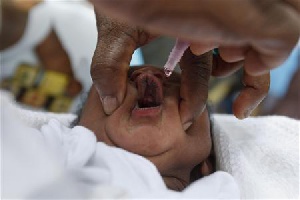Ghana’s latest Demographic and Health Survey (GDHS) conducted in 2014 and released this year has seen the country making giant strides in many priority maternal and child health indicators but with worrying regional, age, rural-urban variations in performance.
Early childhood mortality and morbidity
According to the United Nations Development Programme (UNDP), infant and child mortality rates are basic indicators of a country’s socioeconomic situation and quality of life.
With the exception of neonatal mortality rate where the country recorded marginal declines in the 2008 rate of 33 deaths per 1000 live births to the current rate of 29, post neonatal, infant, and under-five mortality rates all saw very encouraging declines in mortality rates. Post neonatal mortality rates declined by 38 per cent, reducing from 21 deaths per 1000 live births to 13.
Infant mortality rate, a measure of the probability of dying before the first birthday, also declined by 18 per cent from 50 deaths per 1000 deaths recorded in 2008.
Under five mortality, also a measure of the probability of dying between birth and the fifth birthday also reduced by 25 per cent, declining from the 2008 figure of 80 deaths to 60 deaths in the 2014 DHS. Overall, the 2014 GDHS documents a pattern of decreasing under-five mortality during the 15 years prior to the survey.
Weight-for-age is an overall indicator of a population’s nutritional health. On this indicator, the proportion of Ghanaian children that are underweight reduced from 14 per cent in 2008 to 11 per cent in 2014. The Northern Region tops with 20 per cent of children being underweight.
Between 2008 and 2014, the proportion of stunted children reduced from 28 per cent to 19 per cent nationwide. Even so, the Northern Region again recorded worrying levels of stunting at 33 per cent.
The proportion of children who are wasted or considered too thin for their height also reduced from nine per cent in 2008 to five per cent, with the Upper East Region recording the highest levels of nine per cent.
However, Ghana did not improve on the percentage of children that received all the basic vaccinations (BCG, measles, and three doses each of pentavalent and polio vaccine) with the 2008 figure of 79 per cent actually reducing to 77 per cent. According to the DHS report, “The percentage of children with full vaccination coverage ranges from a high of 91 per cent in the Upper West Region to a low of 69 per cent each in the Western and Northern regions.”
Maternal care
Among women who had a live birth in the five years preceding the survey, at least 97 per cent accessed antenatal care from a skilled provider. Volta, Eastern and Northern performed below this national average albeit at a high performance range of 92 per cent to 96.6 per cent.
Overall, over 85 per cent of pregnant women sought antenatal care more than four times during pregnancy. With the exception of Volta, Eastern and the Northern regions which performed between 73-77 per cent, all other regions performed in excess of 90 per cent on this indicator.
On the proportion of women whose last birth was protected against tetanus, the lowest performing demographic groups at risk were young mothers (less than twenty), rural dwellers, and women with no education.
The proportion of births occurring in a health facility increased from 57 per cent to 73 per cent with a corresponding increase in the proportion of births attended to by a skilled health provider from 59 per cent to 74 per cent.
Here, a wide disparity is observed between urban and rural residents with 91 per cent of the former having access to skilled providers compared to 59 per cent of rural dwellers.
A review of the regional variation shows that Volta, Eastern, Northern and Upper West regions are all performing below the national average skilled delivery rates of 73 per cent. The Northern Region actually comes a worrying last with 36 per cent.
At the national level, over 77 per cent of neonates (first month of life) have access to post-natal check-up in the first two days after birth as per the national policy. The following regions are performing below this national average; Northern, Volta, Eastern and Upper West regions.
Upper East Region
Despite being categorised as an under-resourced region, the sterling performance of the Upper East Region on most of these Materna Child Health (MCH) indicators raises interesting questions and learning points worth investigating further.
With 93 per cent of women interviewed having had over four antenatal visits, 84.6 per cent of women being attended to by a skilled provider, 84.1 per cent of deliveries occurring in health facilities, and 87.8 per cent of women having post-natal check-ups in the first two days after birth, the Upper East Region demonstrated consistent high performance above the national average on all these indicators.
The lessons will be important to learn, as they would have massive implications for achieving impact at scale in resource-limited settings.
Conclusion
The Ministry of Health, Ghana Health Service, Christian Health Association of Ghana and other agencies may need to disaggregate the data even further for purposes of learning the specifics of what has worked and through what processes in the various systems.
Lessons around leadership and management, technical delivery, rigour of programme implementation, adaptations and innovations etc all need to be learnt for purposes of speeding up the spread of best practices in order to move from islands of excellence to truly transformed health systems.
Regions not showing improvement on these key indicators may be in need of some focused attention in order to address any bottlenecks impeding improved maternal and child health outcomes.
General News of Sunday, 31 May 2015
Source: sodzisodzi.com













